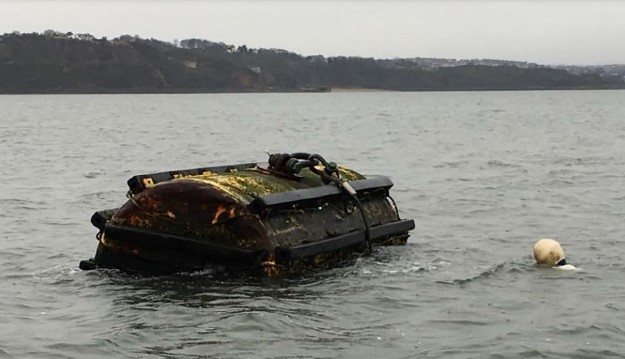In its most recent Safety Digest, UK MAIB reports an incident where a rigid infatable inshore rescue craft an unlit mooring buoy covered with heavy marine growth.
The incident
A rigid infatable inshore rescue craft had been launched to search for a missing person seen entering the water close to its base. It was a dark winter’s night with no moon, with a moderate breeze and a slight sea state. Weather was fair and visibility of lit objects was good.
After the frst 2 hours of searching, the rescue craft returned to base for a routine crew change. The new crew consisted of an experienced helm together with three trainee crew, two of whom had been volunteering for 2 years, and a third who had been volunteering for only 2 months.
After the crew change, the craft departed the base. Concerned that searching and spotting unlit objects in the dark night would be difcult, the helm kept the speed to around 12kts and asked one of the crew to go forward and rig the searchlight. While the crew member was doing this, another crew member suggested that the radar should be transmitting; the helm agreed.
As the crew member fnished rigging the searchlight, and the second crew member bent over to turn on the radar, the craft hit an unlit mooring buoy covered with heavy marine growth. The impact caused the bow
to lift and roll to port, and the outboard engine skegs became caught on mooring pick-up lines attached to the buoy. The boat stopped instantly, propelling the forward crew member out of the boat and resulting in the crew
member who was turning on the radar hitting his head on the handrail in front of him, causing a cut above his left eye.
The crew member in the water infated her lifejacket and swam away from the boat to keep clear of the propellers. The lifejacket functioned correctly, and its light came on automatically. The helm, concerned for the crew member in the water and initially unable to manoeuvre, made a “Mayday” call. The boat was quickly freed from the lines and the crew member recovered.
The craft returned to base and no serious injuries had been sustained. The boat was taken out of service for assessment, and after repairs to minor gelcoat damage was returned to service.
Lessons learned
- The organisation’s manning guidance allowed for one trained helm and three trainees providing that at least some of the trainees were competent to operate the VHF radio, electronic chart navigation and radar equipment. However, once underway, it became clear that the helm was having to take on many of the trainee’s tasks and was acting as boat driver, radio operator and navigator. He became overloaded and quickly lost situational awareness.
- The helm had considered asking one of the crew members to drive the boat, which would have allowed him to concentrate more on navigation and directing the crew. An additional qualifed helm was also available ashore and would have provided better support in lieu of one of the trainees. Whatever the activity, always be sure you understand the capabilities of your crew and ensure that they are used to the best efect, with responsibilities shared so that no one crew member, including the person in charge, is overloaded.
- A safe route had not been programmed into the chart system prior to departure, hazards had not been identifed, and the crew member operating it had not been adequately briefed. Therefore, support from this equipment was limited. The radar was also not transmitting, denying the crew another source of information on dangers. In addition, the crew member setting up the spotlight might also have obscured the helm’s view forward. Keeping a good lookout is vital, and this should involve the whole team, making use of all available means. This is particularly important when operating close to unlit objects at night.
- All crew were wearing full immersion suits, lifejackets and safety helmets, so the crew member who fell into the very cold water was recovered quickly and sufered no injuries. Being properly dressed for the conditions is vital, and in this case made recovery relatively simple and assisted with the satisfactory outcome. Do you consider the expected worst-case conditions and dress appropriately every time? Do you conduct regular drills and are you ready for a person overboard?

































































